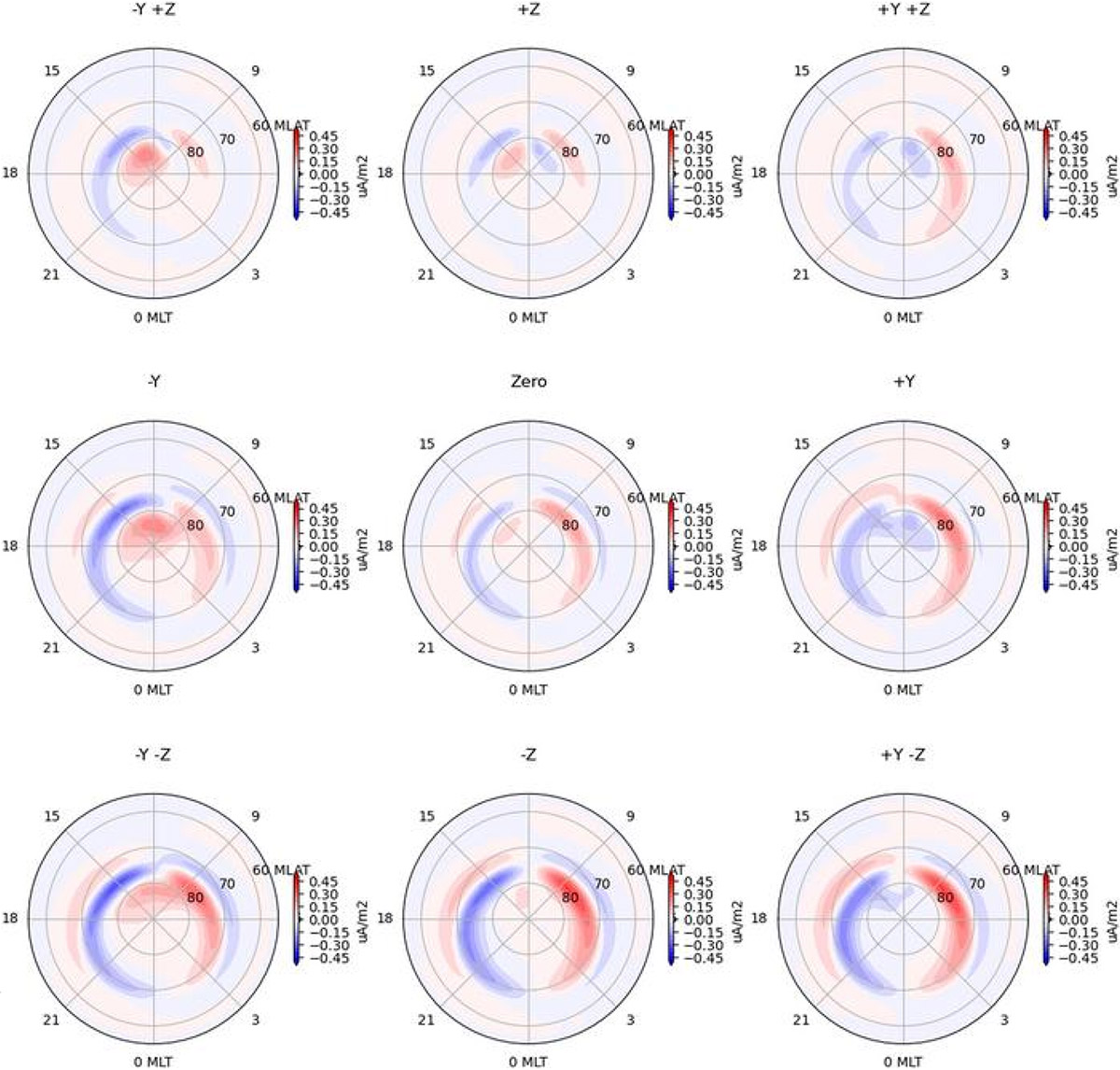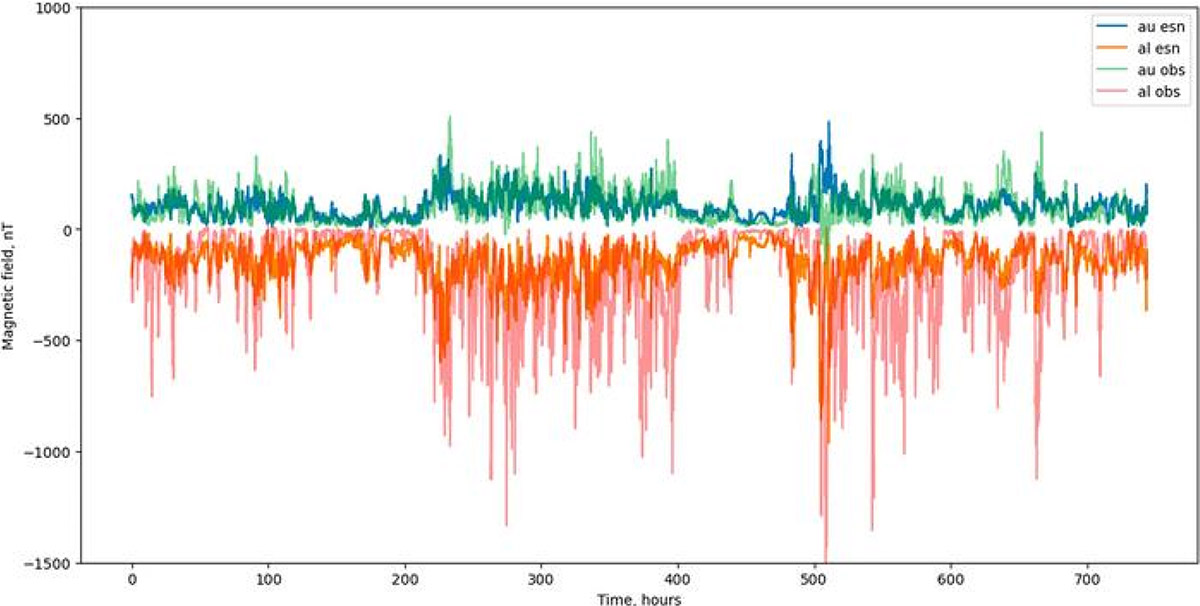National Institute of Polar Research
Researchers leverage machine learning to improve space weather predictions
February 27, 2024
There are three levels of severity for space storms: geomagnetic storms, solar radiation storms and radio blackouts. These storms produce different effects on Earth, including satellite, GPS, mmunications and electrical grid issues, as well as health dangers for astronauts and people on high-altitude flights. Geomagnetic storms also produce the beautiful auroras that are commonly observed in polar regions.
Because of the potential negative effects of space storms, researchers have developed physics-based models that predict the auroral current system based on the incoming solar wind particles ejected from the sun. Up to this point, however, such models were slow and required an entire supercomputer to run. Researchers have now created a machine learning-based emulator that mimics physics-based auroral current system simulations much more quickly and with less computing power.
The team published the results of their study in the January 2 issue of the journal Space Weather.
“A physics-based simulation of the auroral current system is an option for the space weather forecast. However, we need a designated supercomputer for running the physics-based simulation. One of these models is REPPU (REProduce Plasma Universe), which is a well-known and reliable a model that reproduces the auroral current system. Once we created the ‘emulator,’ we could get similar results using a laptop PC,” said Ryuho Kataoka, first author of the paper and associate professor at the National Institute of Polar Research and SOKENDAI, both in Tachikawa, Japan.
The new emulator model, Surrogate Model for REPPU Auroral Ionosphere version 2 (SMRAI2), is a million times faster than the physics-based simulation and incorporates seasonal effects into its modeling.
While solar weather forecasts cannot change the effects of solar radiation and the solar wind particles on and around Earth, it can help communities affected by solar weather prepare for communication difficulties and failures and limit radiation exposure for astronauts and high-altitude aircraft passengers. Satellites, in particular, are highly sensitive to drag caused by magnetic storms. In fact, 38 commercial satellites were lost in February 2022 due to reentry into the Earth’s atmosphere after a moderate magnetic storm. These magnetic storms are the result of a large energy transfer from the solar wind to the Earth’s magnetosphere.
The research team used a time-dependent machine learning model called echo state network (ESN) to create the physics-based prediction model emulator. Importantly, ESNs are a type of recurrent neural network designed to efficiently handle sequential data.
The current study actually improved upon an initial version of the ESN-based emulator, ver1.0. The team trained the new emulator model, SMRAI2, using an order of magnitude more physics-based simulation outputs than the original ver1.0 model.
“The product of this study, SMRAI2, is the first example of auroral physics that utilizes a machine learning technique to emulate the ionospheric output of the physics-based global magnetohydrodynamic (MHD) simulation. Accumulating more MHD simulation data and using other cutting-edge machine-learning models will enable us to update prediction accuracy in the near future,” said Kataoka. MHD simulations are designed to describe the behavior of the magnetosphere, where the solar wind interacts with the Earth’s magnetic field.
The next step for the research team is to incorporate the emulator in running the ensemble space weather forecast, which is a set of forecasts offering a range of future space weather predictions. Their ultimate goal is to use the emulator, together with many observation datasets, in a data-assimilation forecast, which integrates model output and observations to improve prediction accuracy.
Other contributors include Aoi Nakamizo from the National Institute of Information and Communications Technology in Koganei, Japan; Shinya Nakano from SOKENDAI in Tachikawa, Japan, The Institute of Statistical Mathematics in Tachikawa, Japan, and the Center for Data Assimilation Research and Applications at the Joint Support Center for Data Science Research inTachikawa, Japan; and Shigeru Fujita from The Institute of Statistical Mathematics in Tachikawa, Japan and the Center for Data Assimilation Research and Applications at the Joint Support Center for Data Science Research in Tachikawa, Japan.
This work was supported by ROIS-DS-JOINT 012RP2023 grant from the Research Organization of Information and Systems (ROIS) and the Science Program of Japanese Antarctic Research Expedition (JARE) Prioritized Research Project AJ1007 (Space environmental changes and atmospheric response explored from the polar cap), supported by NIPR under MEXT.
Reference
Journal: Space Weather
Title of original paper: Machine Learning-Based Emulator for the Physics-Based Simulation of Auroral Current System
DOI: 10.1029/2023SW003720
URL: https://doi.org/10.1029/2023SW003720
First published: 02 January 2024
About National Institute of Polar Research (NIPR)
The NIPR engages in comprehensive research via observation stations in Arctic and Antarctica. As a member of the Research Organization of Information and Systems (ROIS), the NIPR provides researchers throughout Japan with infrastructure support for Arctic and Antarctic observations, plans and implements Japan's Antarctic observation projects, and conducts Arctic researches of various scientific fields such as the atmosphere, ice sheets, the ecosystem, the upper atmosphere, the aurora and the Earth's magnetic field. In addition to the research projects, the NIPR also organizes the Japanese Antarctic Research Expedition and manages samples and data obtained during such expeditions and projects. As a core institution in researches of the polar regions, the NIPR also offers graduate students with a global perspective on originality through its doctoral program.
For more information about the NIPR, please visit: https://www.nipr.ac.jp/english/
About the Research Organization of Information and Systems (ROIS)
ROIS is a parent organization of four national institutes (National Institute of Polar Research, National Institute of Informatics, the Institute of Statistical Mathematics and National Institute of Genetics) and the Joint Support-Center for Data Science Research. It is ROIS's mission to promote integrated, cutting-edge research that goes beyond the barriers of these institutions, in addition to facilitating their research activities, as members of inter-university research institutes.
PIO Contact:
Toru Higuchi
Research Organization of Information and Systems
higuchi.toru@rois.ac.jp
Expert Contact
Ryuho Kataoka
National Institute of Polar Research
kataoka.ryuho@nipr.ac.jp

Title: Clock angle dependence of the field-aligned current as reproduced by SMRAI2
Caption:
Steady state conditions of the auroral current system pattern in the Arctic region (polar view), which varies with the direction of
the magnetic field of the solar wind, can be reproduced by SMRAI2 almost perfectly. Red and blue represent earthward
(downward) and upward currents, respectively; Y and Z represent the direction of the solar wind magnetic field, with Z positive
northward in the north-south direction and Y positive westward in the east-west direction. For example, 'Zero' indicates no Y
and Z components of the solar wind magnetic field, '-Z' indicates a complete south orientation, and '-Y -Z' indicates a southeast
orientation.

Title: Time-varying auroral electrojet as reproduced by SMRAI2
Caption:
By giving the complex solar wind variations actually observed, very complex temporal variations of the auroral jet currents can also
be reproduced. Light colors represent observed values, dark colors are predictions by SMRAI2. au obs and al obs are observed AU
and AL indices, au esn and al esn are AU and AL indices calculated from emulator results. AU and AL indices indicate auroral
activity at high latitudes.







